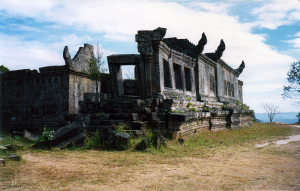Despite the signing of the ASEAN Charter in 2008, the recent border conflict between Thailand and Cambodia has shown that the organisation places the onus of avoiding armed conflict on the disputants themselves. Following Michael Leifer’s account of the ‘ASEAN paradox’ (1983), this dispute has further demonstrated that ASEAN is an association rather than an alliance. Leifer argued that security matters are addressed bilaterally rather than regionally, and national interest prevails over regional unity. Even after both countries withdrew troops in June 2012, it is worth looking back at what the conflict meant for the body.
The ASEAN way, which includes the ‘non-intervention’ principle and consensus-based decision-making, has weakened any possibility of intervention and has constrained any aspirations of regional powers such as Singapore and Indonesia to resolve the border conflict. Less pressure from neighbouring ASEAN countries on the Thai and Cambodian governments has added to the dispute. But these are merely the everyday frictions of diplomacy, rather than something that could threaten the stability of the region.
Other factors that weakened the prospect of ASEAN intervention were that Indonesia had its own agenda of self-interest, which was to boost its own international reputation, along with Secretary General Surin Pitsuwan’s general reluctance to be involved in a conflict involving its members. Moreover, the external factors led ASEAN to depend on the UN Security Council to resolve the conflict as the organisation is unable to impose hard measures on its own member states, such as sanctions.
The latest developments suggest that the border conflict shifted towards peace, but looking ahead, a change in the Thai government might resume the conflict. Therefore, the end result of the conflict remains precarious. If the mediation continues to be successful and peace is sustained, then ASEAN may be able to exercise a degree of influence over other regional territorial disputes, such as in the South China Sea.
Still, in the long term, while the principle of non-intervention has been violated several times, the principle of consensus-based decision making will continue to drive the paradox. The idea of regional unity will remain rhetoric at best, while the divide between member countries enlarges.
ASEAN should rather model itself as a political security organisation based on a UN formula, bestowing members the power to either abstain or veto conflict resolution efforts. The ASEAN Charter has not yet transformed the group into a rules-based organisation, and therefore there needs to be a significant reinvention of policy.
The border conflict is indeed, in some form, a battle for national pride which can be offset by an ASEAN-based regional unity. Still, historical animosity between both countries has existed since the pre-colonial era, and both governments took advantage of engrained nationalism to win support. Thus, the efforts of ASEAN were diplomatic rhetoric with no clear effect, a show of weakness cloaked by rhetoric of “non-interference.”
Sources:
Barry Buzan, Ole Waever, and Jaap de Wilde. 1998. Security: A New Framework for Analysis. Boulder: LynneRiennerPublishers.
Michael Leifer. 1983. “ASEAN and the problem of common response” International Journal Vol. 38 (2)
Dinita Setyawati, an Indonesian political analyst, resides in Jakarta. She researches governance, economic development, environmental politics and labour migration.
 Facebook
Facebook  Twitter
Twitter  Soundcloud
Soundcloud  Youtube
Youtube  Rss
Rss 